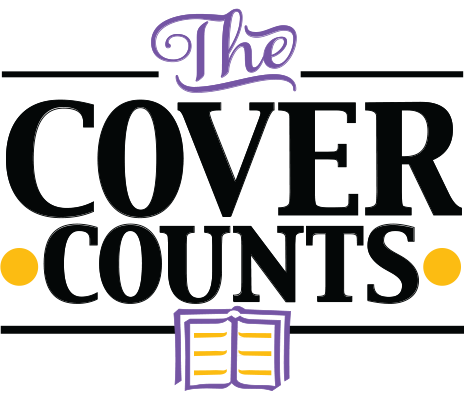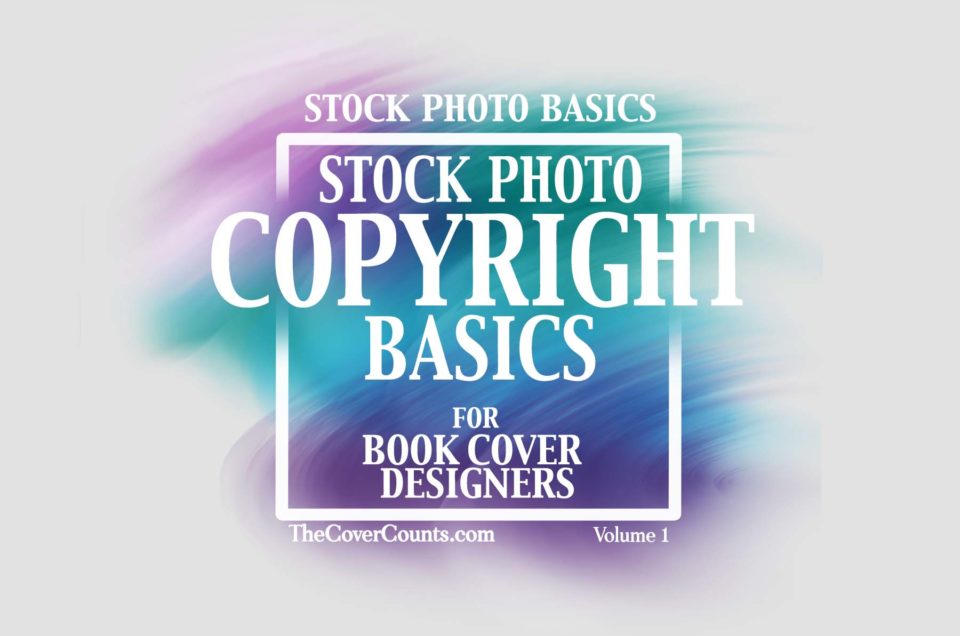So, Let’s talk Copyright for a sec.
One of the things I’ve noticed in many online groups where book cover designers hang out is that a lot of people haven’t been exposed to very much information about what kinds of images can and can’t be used on a book cover. So I thought I’d lay out some of the basics. Note, I am not a copyright lawyer, nor do I play one on TV. But I have been designing for more than 25 years and doing mostly book covers for almost 10. I’ve studied copyright, and I review images for one of the major stock sites. So I know a thing or two. But, still, you all know not to take my words as legal advice, right? Good. So, we can move along then. 😉
The standard stock sites are doing things that actually protect you. They are checking to make sure that releases are there, checking for trademarks that can’t be used commercially, etc. You can pretty much consider them “safe” because you have the evidence that you purchased a license “in good faith.”
But many of the smaller, specialized, “boutique” and “free” sites are NOT providing the same protection. Yes, there are many that are very careful. But there are others that I honestly think either have no clue or just don’t care how much danger they are putting you in. Some of them are offering what should be labeled “reference” images and telling you that it’s royalty free stock, available for you to use on a book cover. But they have *entire sets* of things they’ll sell you that you can’t use for commercial purposes. You can use them as references, or pieces of them, as long as you “bash” them into something that gets rid of all of the blatant copyright violations. When using ANY images that you are not the full copyright owner, it’s up to YOU to know enough about what can be used commercially that you don’t get caught in a trap that could cost you up to $150,000 PER violation. (yeah… a single picture of a public street with 4 trademarks in it could cost you up to $600,000 in fines plus legal fees). The chances that someone would come after you for the top amount is probably small. But they could. And there’s no reason to put authors at risk for even a few hundred dollars.
My point here is that we all need to be aware of what the laws surrounding intellectual property are, even when using licensed stock. The people doing that work are well trained, but they are human. Sometimes things slip through that shouldn’t. Even if you find a “commercially available” version of something that you KNOW shouldn’t be used commercially, just don’t do it… Some of the larger stock agencies will help you (a little bit: like $5,000-20,000) if you get into trouble from using something you licensed through them. It’s called “indemnification”, and I have another blog post planned explaining how it works. But not all of them offer it (I, for sure, know that BigStockPhoto does not, FYI).
Again, at the major stock agencies, human eyes are actually looking at every submission… looking for trademarks, verifying model and property releases, checking dates, making sure they are completed and binding. It’s not “bots”. They really are doing what they can to provide images that wouldn’t put users in dangerous positions. Consider the main stock agencies as safe places to buy licensed stock.
The VERY BABY BASICS are kind of like this.
It’s a very complex thing. But these are the eight categories that I think are the most basic things about copyright and intellectual property that every Cover Designer should know to look out for in the images you especially when it’s not from one of the major stock agencies.

not signed a model release in it. It can not be used in a commercial project.
(AlexGukBO/depositphotos.com)
ANY TRADEMARK, BUSINESS NAME, LOGO, etc. CAN NOT be used commercially. Shot of a city street with a sign for a restaurant? NO! Picture of a toy that shows the little molded, manufacturer name? NO! Car tire that has the model number on the sidewalls? NO! Skyline that has building names showing? NO! Person wearing shoes/hat/shirt/purse that has a logo on it? NO! I could go on and on and on. Many products (vehicles, toys, furniture, etc) are also protected by intellectual property rules. So be very careful.
PEOPLE need model releases. If you can identify a facial feature… even an eye, or a nose, a mouth…. it needs a model release. If you use an image of a person who has not signed a model release, they could demand royalties on every single book sold that had their face on it, and also ask for damages. (beware using images from free stock sites. Free stock sites do not verify that a model release is available)
TATTOOS ARE ART and just like YOUR art, their copyright is held by the artist. If a tattoo is visible on a human being, it needs a Tattoo art release from the artist, not from the model. AND a model release, even if the model isn’t otherwise recognizable. Their tattoo *makes* them recognizable. Tattoos can not be of trademarked or recognizable characters or people, even with a tattoo release. Henna, and temporary tattoos do not need a release.

Notice something odd about this photo? Those are some weird paintings to be hanging in this very traditional space. There was no property release available to the photographer for the art on the wall. So they chose to blur the paintings to allow the photo to be offered for commercial use. Also, note the books in the left foreground. If those titles hadn’t been blurred/cloned out, using this image would have been a huge risk for your authors. (PinkyWinky/Shutterstock.com)
WALL ART needs property releases (even stuff hanging on the wall in a generic interior kitchen or living room!)
RECOGNIZABLE or UNIQUE INTERIORS need property releases. If it’s generic looking, it’s probably ok. But if there is something unique about it that would make it easily recognizable as being THAT place, it needs a property release. Any item in a museum, needs a property release. NOTE: historical buildings, churches, museums, etc will generally NOT issue property releases.
MODERN ARCHITECTURE exterior needs a Property Release…. Some are ok to use in a skyline if not the main focus…. but watch out. There are many that it’s NEVER ok to use in ANYTHING commercial, EVER. for most NON-modern buildings, Exterior shots, FROM PUBLIC property, are ok. If it isn’t a public place (IE: you have to pay admission or have permission to get in) and looks like it was taken from the inside of the property, like a castle garden, and you can assume they are on the actual grounds… it also probably needs a property release.
SCULPTURE/STATUES need property release for the statue if they’re from *AFTER* 1900. If they’re on private property, they also need a property release for their location.
.
.
TRANSFORMATIVE WORK laws are not an umbrella for artists to hide under, thinking they’ve avoided violating copyright by changing a few things. Unless you’ve studied how that works *in depth* I will lay real money down that you are probably still breaking someone’s copyright. And if you’re not careful, you, or the authors you’re designing for, WILL have to lay down real money.
Summing it up…
It’s up to YOU to know enough to keep yourself and your authors safe from a huge lawsuit.
As I said above, if you’re buying licenses from the main stock agencies, you’re covered for many issues. You can assume that things like model releases and property releases have been verified, that wall art in a living room has been cleared, or that the buildings in the skyline are acceptable. Though, still… human beings make mistakes, so if you see locations, products, trademarks, etc that you KNOW aren’t ok. They still aren’t ok just because they’re on the stock site.
AND… it’s important to remember that not all of those smaller image sources are looking out for YOU. Many of them offer things that literally violate copyright 10 ways. It doesn’t matter if you pay for a license or using free resources, it’s still up to you to protect yourself and your clients.
No one is perfect. And generally, when you can prove that you’ve used something in good faith, and have purchased what you thought was a valid license (NOT from a source that is blatantly violating copyright all over the place) the worst that’s *likely* to happen is that you get asked to cease and desist immediately. But, beware, even if you remove an offending cover immediately, the copyright owner is still perfectly within their rights to demand payment.
More Resources & Info
Read my post about when your clients will need extended licenses.
Copyright laws are extremely extensive and confusing. The above list barely scratches the surface. You can find more specific details about what can and cannot be used commercially at the links below. I highly recommend taking a look so you can make sure you protect yourself. There are some surprising things that can’t be used commercially in any way.
Shutterstock Known Image Restrictions
AdobeStock Known Image Restrictions
All three have much of the same info, just in different formats. Use the one where you find the most information and feel is the easiest to navigate.
LEARN how to spot the pitfalls
before you fall into one that you can’t get out of.
Have something to say? Your comments are welcome!


